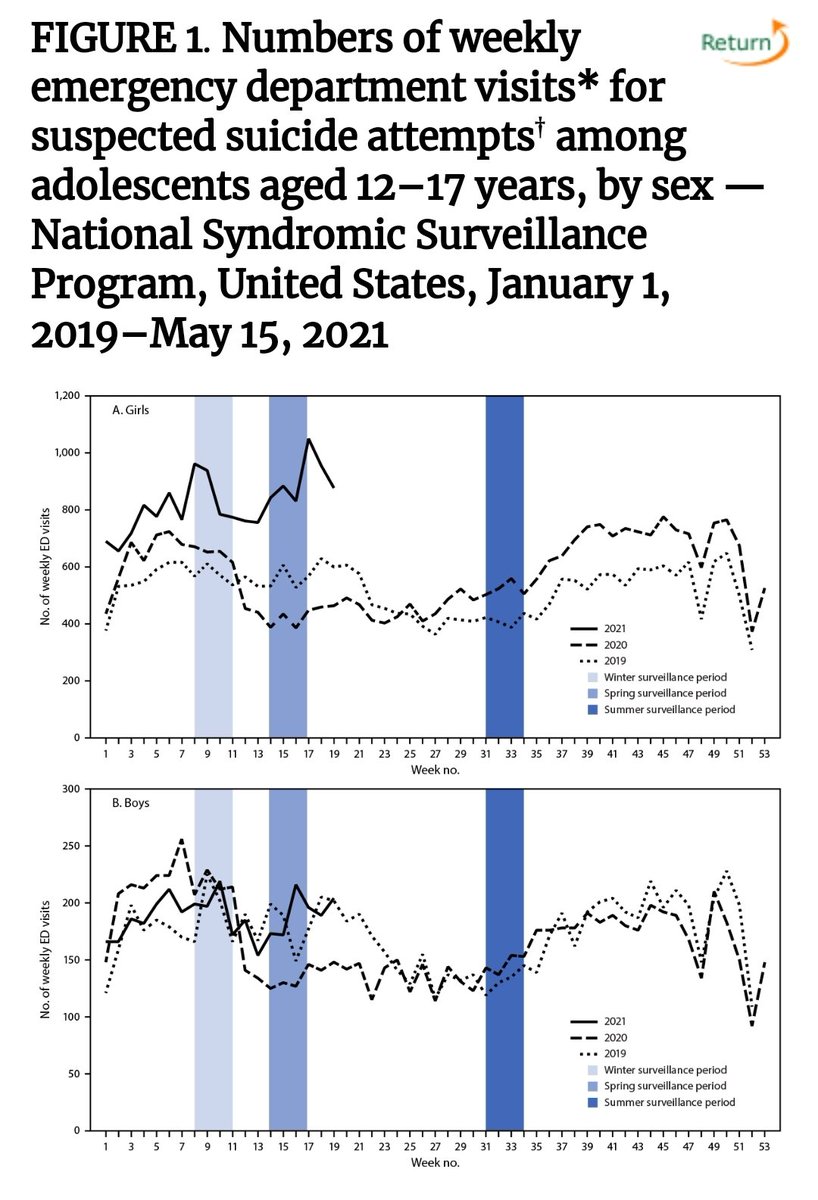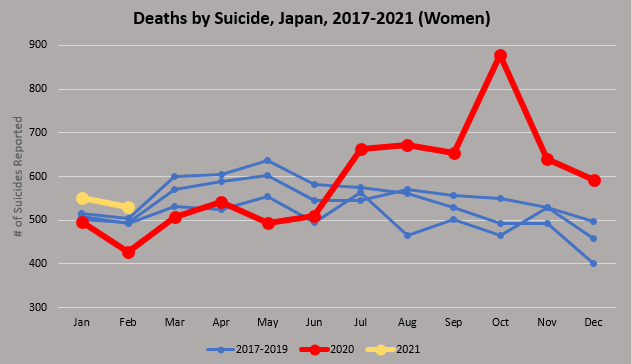
Biiiiig separation between boys and girls in the US for ER presentations for suicide attempts. Very average-to-highish year for boys, big difference for girls. Amplification not surprising: Girls are more likely than boys to gesture/attempt suicide, boys are more likely to die. 

Please note reports like this do not support your pet theory on what caused it. The increases in pediatric have been continuing since 2015 (30 to 50% year over year) and the pandemic/Lockdowns/whatever may or may not have had an influence on it. Causes yet to be determined.
Also note for both the y axis is very different. The young girl subpopulation has far more attempts/self harm presentations every year.
I should have read more carefully. This melded together suicide attempts and nonsuicidal self harm. These are two very different phenomenon. Nonsuicidal self harm is a coping mechanism. This shifts the report significantly - unsurprisingly, all measures of distress are up.
• • •
Missing some Tweet in this thread? You can try to
force a refresh














